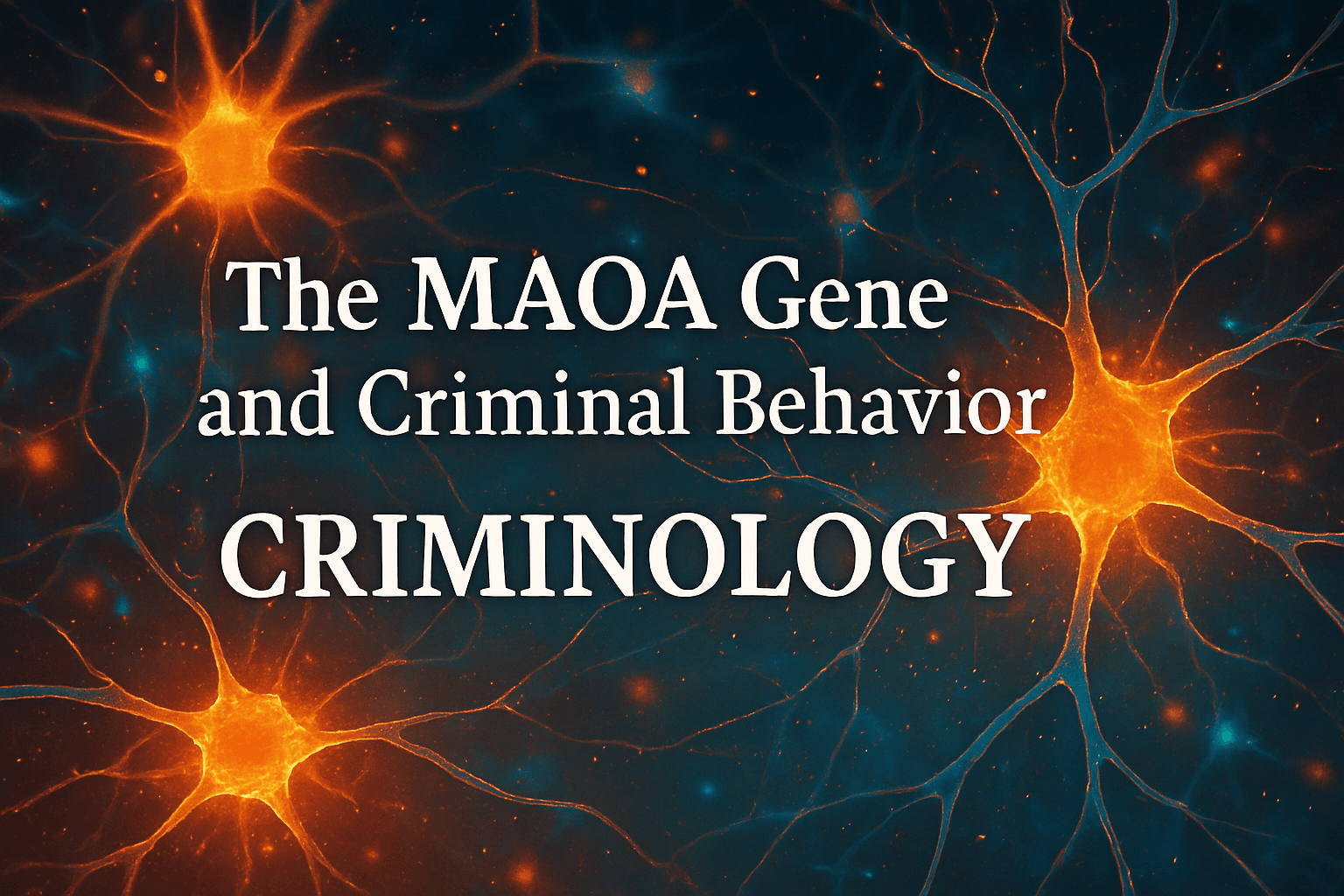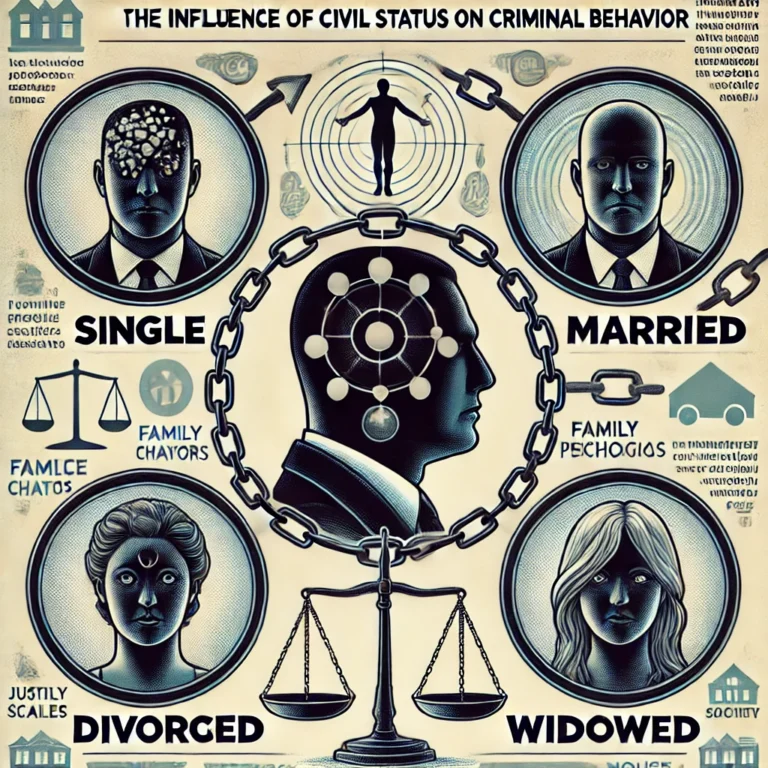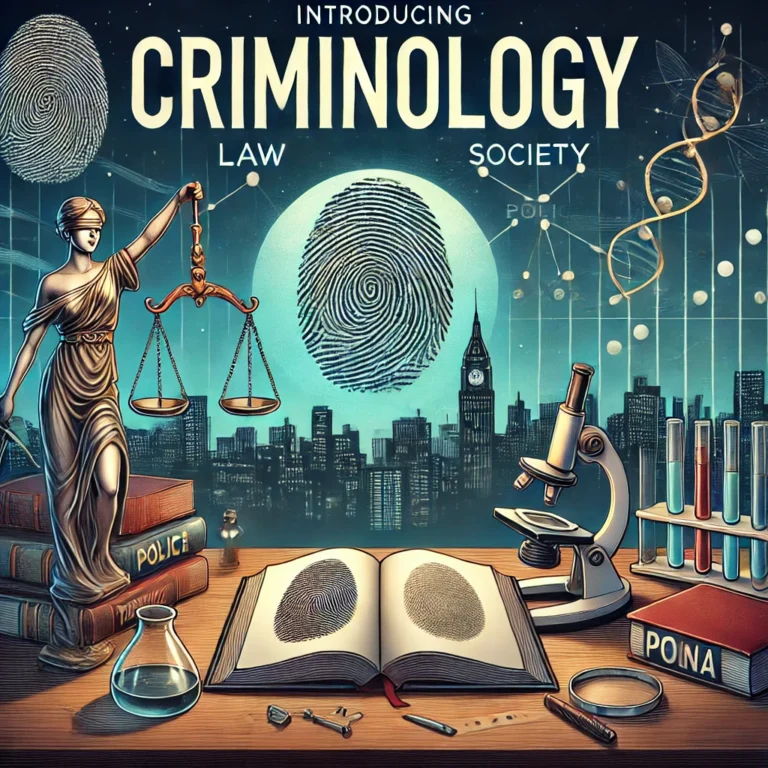The MAOA Gene and Criminal Behavior: CRIMINOLOGY
Introduction
In recent years, the study of genetics has significantly advanced our understanding of human behavior, particularly concerning aggression and criminal tendencies. One of the most controversial discoveries in this field is the MAOA gene (Monoamine Oxidase A), often referred to as the “warrior gene.” This gene has been linked to aggression, impulsive behavior, and even violent crime. The connection between MAOA and criminal behavior raises profound questions:
- Can genetic predisposition influence criminality?
- Is there such a thing as a “criminal gene”?
- Should genetics be considered in criminal defense cases?
This article explores the scientific basis of the MAOA gene, its influence on behavior, its correlation with violent crime, and the ethical dilemmas associated with its use in legal and societal contexts.
What Is the MAOA Gene?
The MAOA gene is responsible for producing the enzyme monoamine oxidase A, which plays a crucial role in breaking down neurotransmitters such as serotonin, dopamine, and norepinephrine in the brain. These chemicals regulate mood, decision-making, and impulse control.
This gene is located on the X chromosome, meaning that men (who inherit only one X chromosome from their mother) are more affected by mutations in this gene compared to women, who inherit two copies and may compensate for defects in one.
Variations of the MAOA Gene
There are different variants of the MAOA gene that influence how much of the enzyme is produced:
- MAOA-H (High-activity variant): Leads to normal or high levels of enzyme production, facilitating proper breakdown of neurotransmitters and contributing to balanced emotional regulation.
- MAOA-L (Low-activity variant): Results in lower enzyme levels, causing an accumulation of neurotransmitters that may lead to increased aggression, impulsivity, and difficulty in emotional regulation.
Studies have suggested that individuals with the MAOA-L variant are more likely to display aggressive or antisocial behavior, particularly if they have been exposed to childhood abuse or environmental stressors.
MAOA and Its Link to Criminal Behavior
Scientific Research on MAOA and Aggression
The connection between the MAOA gene and aggressive behavior has been widely studied, with many researchers identifying correlations between the low-activity MAOA variant and violent tendencies.
- Caspi et al. (2002) Study
- A landmark study conducted in New Zealand followed over 1,000 individuals from childhood to adulthood.
- The results showed that individuals with the MAOA-L variant who had been abused as children were significantly more likely to engage in violent and antisocial behavior as adults.
- However, those with the MAOA-L variant who had a stable and non-abusive upbringing did not display increased aggression, highlighting the interaction between genetics and environment.
- Prisoner Studies
- Research on violent criminals has shown that a higher proportion of inmates convicted of serious violent offenses possess the MAOA-L variant compared to the general population.
- One study found that prisoners with low-activity MAOA had higher rates of impulsivity and aggression, especially in high-stress environments.
- Brain Imaging Studies
- MRI and fMRI scans indicate that individuals with MAOA-L show hyperactivity in the amygdala (the brain’s fear and aggression center) and reduced activity in the prefrontal cortex (responsible for impulse control and decision-making).
- This suggests that the genetic mutation affects brain function, making individuals more prone to aggression in high-stress situations.
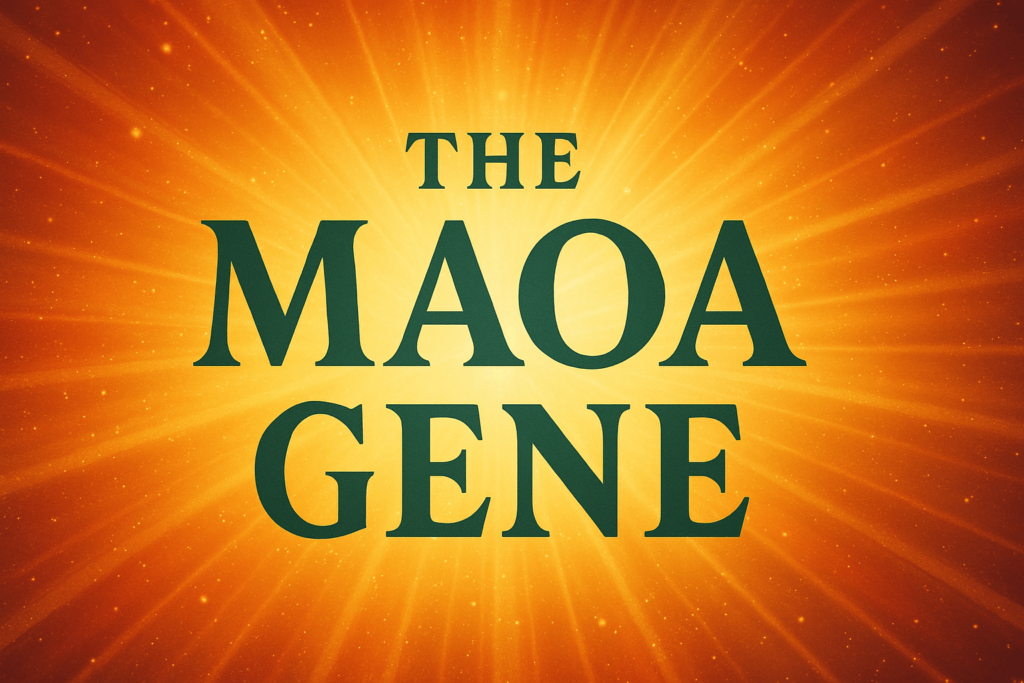
The Debate: Is the MAOA Gene a Crime Predictor?
1. Genetic Determinism vs. Free Will
While there is strong evidence linking MAOA-L to aggressive behavior, scientists emphasize that genetics alone does not determine criminality. Instead, the interaction between genes and environment plays a crucial role.
For example:
- A person with MAOA-L who experiences severe childhood abuse may have an increased likelihood of developing violent tendencies.
- A person with MAOA-L raised in a nurturing and supportive environment may never exhibit aggressive behaviors.
Thus, genetic predisposition is not fate, and social factors remain critically important.
2. The Use of MAOA in Legal Defense
The discovery of MAOA‘s link to aggression has led to its use as a legal defense strategy, particularly in homicide cases. Some defense attorneys have argued that their clients were “genetically predisposed” to violence and should receive reduced sentences.
Famous Court Cases Involving MAOA
- Italy (2009): A convicted murderer had his sentence reduced after presenting evidence of carrying the MAOA-L variant. The court accepted that his genetic makeup made him more predisposed to violent behavior, reducing his punishment.
- United States (2007): In a similar case, a defense attorney attempted to use the MAOA gene as mitigating evidence, but the court rejected it due to insufficient scientific consensus.
Despite these cases, most legal systems are hesitant to accept genetics as a primary defense, as this raises complex ethical questions about accountability and personal responsibility.
3. Ethical Concerns: Genetic Profiling and Discrimination
If genes like MAOA-L are linked to criminal behavior, should societies conduct genetic screening to identify “at-risk” individuals? This raises several ethical concerns:
- Genetic Discrimination: Labeling individuals as “potential criminals” based on genetics could lead to unjust treatment and loss of personal freedoms.
- Self-fulfilling Prophecy: If a person is told they have a “crime gene,” they may internalize this label and become more likely to engage in deviant behavior.
- Overlooking Environmental Factors: Social conditions, education, and family support remain far more influential in shaping behavior than genetics alone.
Most ethicists and legal experts argue that genetics should never be used to predict or preemptively punish criminal behavior but rather as a tool for understanding human aggression and developing better social interventions.
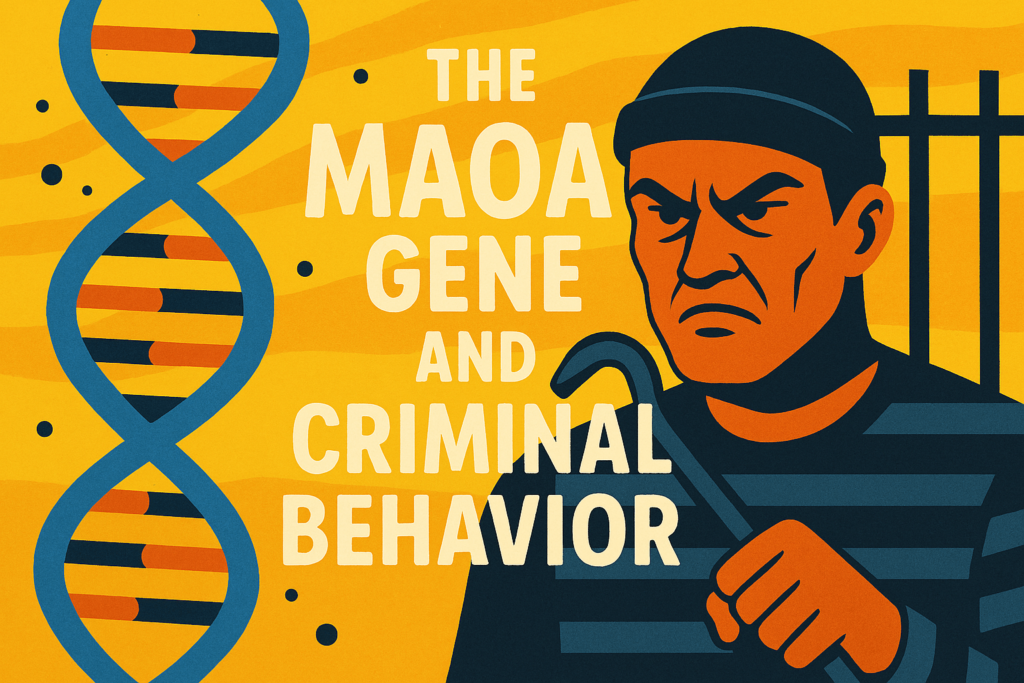
Conclusion
The MAOA gene offers a fascinating insight into the complex interplay between genetics, brain chemistry, and human behavior. While there is compelling evidence linking the MAOA-L variant to aggression and violent crime, it is not a direct cause of criminality. Instead, environmental factors such as childhood experiences, trauma, and social conditioning play a crucial role.
From a legal and ethical perspective, genetics should not be used to excuse criminal behavior, nor should individuals be pre-judged based on their DNA. Rather than viewing the MAOA gene as a crime predictor, it should be seen as one piece of a much larger puzzle that helps us understand the biological underpinnings of aggression and improve crime prevention strategies.

